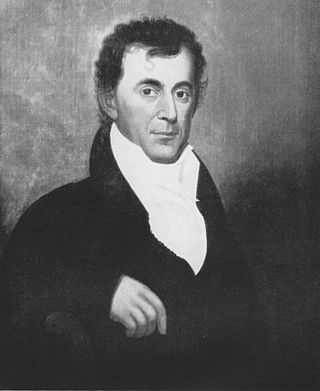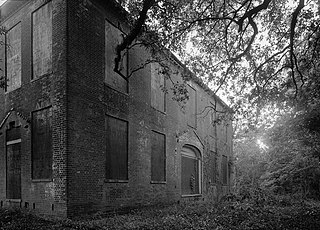
Hancock County is a county located in the northeastern part of the U.S. state of Tennessee. As of the 2020 census, the population was 6,662, making it the fourth-least populous county in Tennessee. Its county seat is Sneedville.

Claiborne County is a county located in the U.S. state of Tennessee. As of the 2020 census, the population was 32,043. Its county seat is Tazewell and its largest city is Harrogate.

Norris is a city in Anderson County, Tennessee. Its population was 1,599 at the 2020 census. It is included in the Knoxville, TN Metropolitan Statistical Area.

Tazewell is a town in and the county seat of Claiborne County, Tennessee, United States. The population was 2,165 at the 2000 census, 2,218 at the 2010 census, and 2,348 at the 2020 census. The town is named for Tazewell, Virginia, which itself was named for Henry Tazewell (1753–1799), a U.S. senator from Virginia.

Richlands is a town in Tazewell County, Virginia, United States. The population was 5,261 at the 2020 census. It is part of the Bluefield, WV-VA micropolitan area which has a population of 107,578.

Littleton Waller Tazewell was a Virginia lawyer, plantation owner, and politician who served as U.S. Representative, U.S. Senator and the 26th Governor of Virginia, as well as a member of the Virginia House of Delegates.

Walters State Community College is a public community college based in Morristown, Tennessee. It was founded in 1970 and is operated by the Tennessee Board of Regents. The college was named in honor of former United States Senator Herbert S. Walters.
This is a list of the National Register of Historic Places listings in Knox County, Tennessee.

Sam Houston Schoolhouse State Historic Site is a single-room log cabin-style schoolhouse in Maryville, Tennessee, built in 1794. Sam Houston taught at the school as a young man, before the War of 1812.
Graham House may refer to:
This is a list of the National Register of Historic Places listings in Claiborne County, Tennessee.

Seven segments of the historic Natchez Trace are listed on the National Register of Historic Places (NRHP). Also there are additional NRHP-listed structures and other sites along the Natchez Trace, which served the travelers of the trace and survive from the era of its active use.

The DuBose Conference Center, formally known as the DuBose Memorial Church Training School, is a historic site and former conference center associated with the Episcopal Church at Fairmont and College Streets in Monteagle, Tennessee. It was historically an Episcopal Church training and conference center. On April 29, 2023, the conference center permanently ceased operations when the Episcopal Diocese of Tennessee deconsecrated the property. The mission of DuBose Conference Center was to "offer hospitality, programming, and sacred space to groups of all faiths and backgrounds for education, creativity, and renewal."

The Claiborne Kinnard House also known as Windermere is a historic home in Franklin, Tennessee, built in 1887 on land that was once the eastern flank of the 1864 Battle of Franklin. A 1988 study of Williamson County historical resources assessed that this house was one of the "best two-story vernacular I-House examples" in the county; the others highly rated were the William King House, the Alpheus Truett House, the Thomas Brown House, the Beverly Toon House, and the Stokely Davis House. The house was listed on the National Register of Historic Places in 1988. It is located in Franklin at the corner of Lewisburg Pike and Carnton Lane.

The Van Dorn House is a historic hilltop residence in Port Gibson, Mississippi built circa 1830 for Peter Aaron Van Dorn and his wife. He was a lawyer from New Jersey who made his fortune in this area, having a practice, gaining political appointments, and becoming a cotton planter. This was the home for years for his large family in Port Gibson, including son Earl Van Dorn. The latter was a career U.S. Army officer who joined the Confederate Army after the start of the Civil War, ultimately reaching the rank of Major General.

The Claiborne County Jail in Tazewell, Tennessee, is a historic jail that is listed on the National Register of Historic Places.
Airdrie, a.k.a. Petway House or the Buell-King House, is a historic house and former plantation in Nashville, Tennessee. Built as a log house from 1797 to 1808, it was a Southern plantation with African slaves in the Antebellum era. After the American Civil War, it belonged to Union veterans.

The Graham-Kivett House is a historic house in Tazewell, Tennessee. It was built of limestone around 1800 by William Graham, an immigrant from Ireland who co-founded of Tazewell. The house was designed in the Federal architectural style. By the turn of the 20th century, it belonged to William Yoakum, who sold it to James Kivett, a lawyer. It was inherited by his son, J. K. Kivett, who served as the county judge of Claiborne County until he was "convicted in December 1956 of taking four $1,000 county bonds to a Knoxville bank in June 1954 to obtain a personal loan of $5,400." The house remained in the Kivett family in the 1970s. It has been listed on the National Register of Historic Places since May 29, 1975.

The East Tennessee Crossing Byway is a 83-mile (134 km) National Scenic Byway in the U.S. state of Tennessee. Established in 2009, it is one of the newest byways in the National Scenic Byway system. The scenic byway traverses mostly along an unsigned concurrency of U.S. Route 25E/State Route 32 (US 25E/SR 32) in East Tennessee.

















